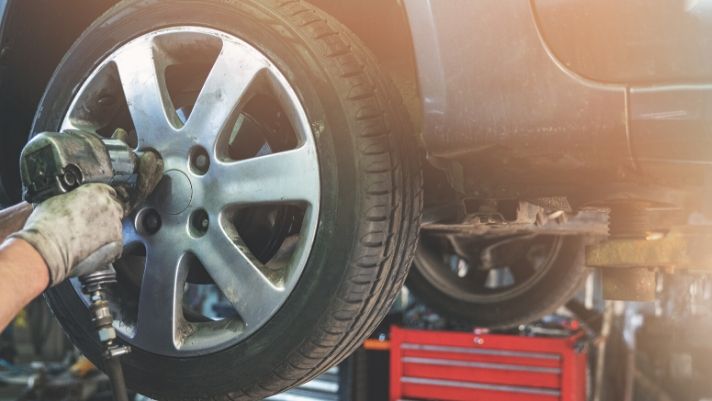Mastering Road Safety and Performance: The Ultimate Guide to Quality Tires from TacTires
August 31, 2023
Rolling Wonders: Unveiling the Fascinating World of Tire Manufacturing, Quality, and Innovation
September 8, 2023- Aesthetic rims
- Brake clearance advice
- Car rim offset
- Choosing offset wisely
- Custom rim offset
- Enhanced performance
- Handling improvement
- Legal rim offset
- Negative offset advantages
- Offset and aftermarket wheels
- Offset and car appearance
- Offset and cornering
- Offset and driving style
- Offset and rim sizing
- Offset and road performance
- Offset and tire choice
- Offset and tire clearance
- Offset and vehicle modifications
- Offset and vehicle safety
- Offset and wheel alignment
- Offset for different vehicles
- Offset optimization
- Performance rims
- Positive offset benefits
- Rim offset and maneuverability
- Rim offset and stability
- Rim offset and suspension setup
- Rim offset and vehicle control
- Rim offset comparisons
- Rim offset compliance
- Rim offset effects
- Rim offset explained
- Rim offset guide
- Rim offset pros and cons
- Rim offset regulations
- Rim offset safety
- Rim offset trends
- Rim offset types
- Style and rims
- Suspension clearance
- Tire and wheel fitment
- Tire fitment guide
- Tire fitment tips
- Track width considerations
- Vehicle customization tips
- Wheel fitment tips
- Wheel selection tips
- Wheels and offset
- Zero offset explained
Understanding Car Rim Offset: A Comprehensive Guide
Car enthusiasts often obsess over every detail of their vehicles, and one crucial aspect that can significantly impact a car’s appearance and performance is the offset of its rims. The rim offset is a fundamental specification that plays a crucial role in how the wheels fit on a vehicle. In this comprehensive guide, we will dive deep into the world of rim offsets, explaining what they are, how they work, and why they matter.
What Is Rim Offset?
Rim offset refers to the distance between the mounting surface of the wheel and the wheel’s centerline. It is typically measured in millimeters and is classified into three main categories:
- Positive Offset: When the mounting surface is closer to the outside (road-facing) edge of the wheel, the offset is positive. Most passenger vehicles come with wheels featuring positive offset. This design choice helps keep the wheels tucked inside the wheel wells.
- Zero Offset: In zero offset wheels, the mounting surface is at the centerline of the wheel. This means that the wheel’s width is evenly distributed on both sides of the mounting surface. Zero offset wheels are often found in some older cars and trucks.
- Negative Offset: When the mounting surface is closer to the inside (vehicle-facing) edge of the wheel, it is considered a negative offset. Negative offset wheels protrude outwards from the vehicle’s body and are common in off-road and performance applications.
Why Does Rim Offset Matter?
Rim offset is not just about aesthetics; it plays a significant role in a car’s performance and handling. Here’s why it matters:
- Appearance: The offset can dramatically impact the visual appeal of your car. A lower offset (negative) tends to give a more aggressive, sporty look, while a higher offset (positive) provides a cleaner, tucked-in appearance.
- Handling and Performance: The offset affects the vehicle’s track width, which can influence handling characteristics. Wider track widths (achieved with lower offset rims) can improve stability and cornering performance. Conversely, narrower track widths (higher offset) may enhance maneuverability in tight spaces.
- Suspension Clearance: The offset can impact suspension components. Wheels with an improper offset can rub against suspension parts or the vehicle’s body, causing damage and affecting ride quality.
- Brake Clearance: Depending on the vehicle’s brake setup, the offset can affect brake clearance. Too much or too little clearance can lead to issues like brake caliper interference.
- Tire Fitment: Rim offset also determines the available space for tire fitment. Wheels with a specific offset may limit your tire size options or require modifications to avoid rubbing.
How to Choose the Right Rim Offset
Selecting the right rim offset is crucial to ensuring your wheels fit and perform as desired. Here are some steps to help you make an informed choice:
- Consult Your Vehicle’s Specifications: Start by checking your vehicle’s owner’s manual or consulting the manufacturer’s guidelines to determine the recommended rim size and offset range.
- Consider Your Driving Style: Your driving habits and preferences play a role in choosing the right offset. If you prioritize performance and handling, a lower offset may be suitable. For a smoother ride and daily commuting, a higher offset could be a better choice.
- Check Local Regulations: Ensure that the rim offset you choose complies with local regulations and doesn’t affect the vehicle’s safety or legality on the road.
- Seek Professional Advice: If you’re unsure about which offset to choose or need assistance with fitment, consult with a reputable tire and wheel specialist. They can provide expert guidance based on your vehicle and requirements.
- Test Fitment: If possible, test-fit different wheel offsets before making a final decision. This can help you visually assess how the wheels will look and ensure they clear important components like the suspension and brakes.
In conclusion, the rim offset is a critical aspect of wheel fitment that can impact both the appearance and performance of your vehicle. Understanding the different types of offset and how they affect your car’s characteristics is essential for making the right choice. Always prioritize safety, performance, and compliance with regulations when selecting new rims for your vehicle.
Remember that the perfect offset may vary from one car to another, so take your time, do your research, and seek professional advice if needed. By making an informed choice, you can enhance both the style and functionality of your car’s wheels.
For more information on car rims and tire fitment, explore our wide range of products at www.tactires.com.



